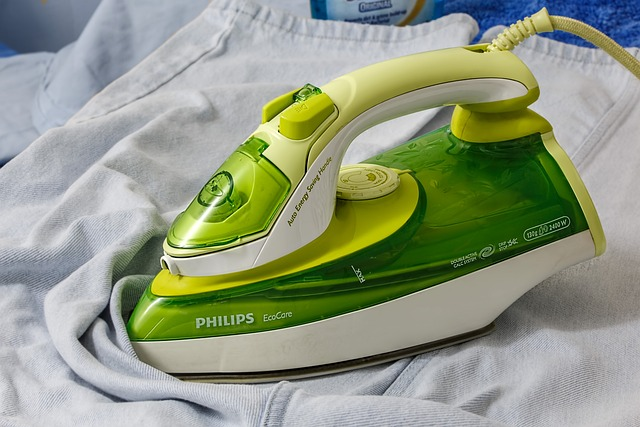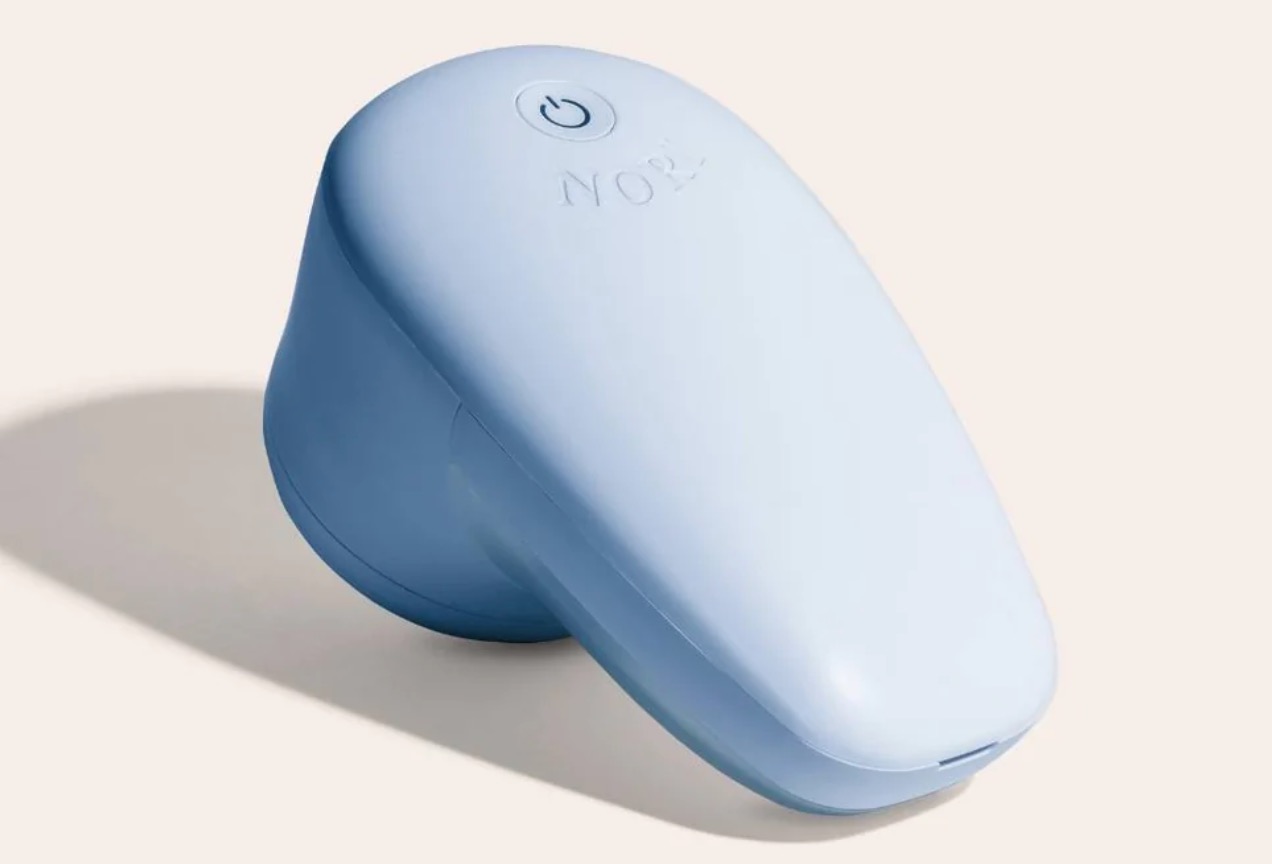 Ever felt frustrated when your favorite shirt loses its vibrant color or when your comfy sweater starts to pill? Proper clothing care is an essential skill that can save you time, money, and heartache. By understanding the specific needs of your clothes and implementing effective clothing care routines, you can keep your wardrobe looking fresh and stylish for years to come.
Ever felt frustrated when your favorite shirt loses its vibrant color or when your comfy sweater starts to pill? Proper clothing care is an essential skill that can save you time, money, and heartache. By understanding the specific needs of your clothes and implementing effective clothing care routines, you can keep your wardrobe looking fresh and stylish for years to come.
Attention: Use discount code "SHOP10" at checkout to save 10% on The Nori Press!
Short Summary
-
Understand the care needs of fabrics to preserve clothing longevity.
-
Sort clothes by color, fabric type, and washing temperature before laundering.
-
Utilize air drying techniques, choose appropriate hangers for storage, and treat only stained areas when cleaning garments.
Understanding Your Clothes' Needs

Becoming familiar with your garments’ materials and care instructions is the cornerstone of effective “care of your clothes.” Whether it’s deciphering laundry symbols, reading care labels, or learning about various fabrics, understanding the unique needs of your clothes can make a significant difference in maintaining their appearance and longevity.
Taking the time to learn about clothing care routines and materials and care instructions for your clothes can help you make better clothes.
Fabrics and their specific care needs
One of the key elements of proper clothing care is knowing the unique needs of different fabrics. For instance, delicate fabrics like silk and lace require gentle handling and should be washed with a gentle detergent in cold water. On the other hand, durable fabrics like denim can withstand more robust washing methods, such as machine washing with heavier detergents.
Familiarizing oneself with laundry symbols is essential for selecting the appropriate washing and drying methods, as well as choosing the right laundry detergent for preserving the longevity of one’s garment. Organizing fabrics in comparable batches and using the appropriate water temperature, such as warm water for certain fabrics, can help ensure proper maintenance of your clothes.
Decoding laundry symbols
Laundry symbols provide vital information for proper garment care. These symbols indicate the temperature of the wash cycle, the type of cycle, and whether or not ironing is suitable for the garment. For example, a single dot stands for a delicate cycle, two dots for a warm cycle, and three dots for a hot cycle.
A crossed iron symbol indicates not to iron the garment. By decoding these symbols, you can choose the correct washing and drying methods for your clothes, ensuring that they maintain their quality and appearance.
Reading care labels
Care labels are often found along the inside of garments and provide essential information about proper handling, laundry instructions, and fabric composition. Adhering to the care instructions on these labels can prevent damage to your clothes and help maintain their freshness.
For delicate items, using a washing bag is recommended to protect them during the washing process.
Sorting and Preparing Clothes for Washing

Sorting your clothes before washing is crucial to preserving their condition. By separating your garments by color, fabric type, and washing temperature, you can prevent color bleeding, protect delicate materials, and maintain the shape and vibrancy of your clothes.
Organizing your laundry in this way will help you keep your wardrobe looking its best for longer.
Color sorting
To avoid color bleeding and fading, it’s essential to sort your clothes by color. Start by distinguishing between whites and colors, and then separate colors into light and dark shades. Finally, arrange the colors into individual piles.
By sorting your clothes by color, you can prevent unwanted clothing damage and keep your garments looking their best.
Fabric-type sorting
Grouping your clothes by fabric type can help protect delicate materials from damage during the washing process. For instance, separate delicate fabrics such as silk and lace from heavier fabrics such as denim and canvas. This ensures that each fabric type receives the appropriate care and water temperature settings, preserving the quality and appearance of your garments.
Washing temperature sorting
Sorting your clothes by washing their temperature is crucial to maintaining their shape and color. Separate less soiled clothes from heavily soiled clothes, and use a higher temperature setting for the latter. To properly wash clothes, including washing t-shirts, it’s important to follow these guidelines.
By sorting your clothes according to their washing temperature requirements, you can prevent shrinkage, fading, and damage to the fabric.
Lower the tempertaure
Using lower washing temperatures for your clothes can save energy and prolong their life. Decreasing the temperature when washing clothes helps avoid shrinking, fading, and harm to the fabric while conserving energy and minimizing environmental impact.
Consider adjusting your washing machine settings to use cold water for a more eco-friendly approach to clothing care.
Remove pilling with a fabric shaver
Pilling can make your clothes look worn and aged. A fabric shaver like the Nori Trim is a handy tool that can help you remove pilling and restore your clothes to a fresh and new appearance. To effectively utilize a fabric shaver, turn it on and gently move it over the fabric in a circular motion, ensuring that the shaver remains in motion to avoid the potential for fabric damage.
When using a fabric shaver, it is important to be gentle and avoid pressing too hard. Make using a fabric shaver like The Nori Trim one of your standard clothing care routines.
Drying Methods to Preserve Clothes
Selecting the right drying method for your clothes is crucial to maintaining their quality and longevity. From air drying techniques to tumble drying with dryer balls, choosing the appropriate method can help preserve your garments and keep them looking their best.
Different drying methods have different benefits and drawbacks. Air drying is a great way to save energy.
Air drying techniques

Air drying is a gentle and energy-efficient method for drying your clothes. Utilize various air drying techniques, such as hanging clothes on a clothesline or drying rack, to reduce wear and tear on garments and effectively air dry them.
By allowing your clothes to dry naturally, you can maintain their shape, prevent shrinking, and ensure they stay fresh and vibrant.
Using a clothes rack

A clothes rack is an efficient and gentle way to dry your garments. To utilize a clothes rack for drying clothes, first sort the clothes by fabric type and color, then hang them on the rack, ensuring sufficient space between items for air circulation.
Lastly, place the rack in a well-ventilated area with no direct exposure to sunlight. Implementing this method can help protect your clothes from damage and maintain their quality.
Attention: Use discount code "SHOP10" at checkout to save 10% on The Nori Press!
Avoiding over-drying

Over-drying your clothes can lead to shrinkage, brittleness, and a loss of shape. To prevent over-drying, adhere to the instructions on the care label of the item and monitor the drying process regularly.
By avoiding over-drying, you can help maintain the quality and appearance of your garments.
Steam as an alternative to washing
Steaming with irons like The Nori Press is a gentler alternative to washing certain fabrics and garments, such as silk, wool, and other delicate fabrics. By using steam to remove dirt and odors, you can clean and refresh your clothes without subjecting them to the wear and tear of a traditional washing machine. Additionally, using baking soda as a natural deodorizer can further enhance the cleaning process.
Steam cleaning is a great way to keep your clothes looking and smelling fresh without the need for a vacuum.
Basic ironing process

Mastering the basic ironing process can help keep your clothes looking their best. Set up your ironing board near an electrical outlet, fill the reservoir with water if your iron has a steam function, and begin ironing from the collar or waist down, gradually smoothing out the fabric.
Remember to treat delicate fabrics and delicate garments gently and follow the care instructions on the label to avoid any damage.
Steaming delicate fabrics
Steaming delicate fabrics is an excellent way to remove wrinkles and refresh them without washing. Utilize a steamer or an iron with a steaming function, holding it a few inches away from the fabric and moving it slowly in a circular motion. Steaming can help maintain the appearance and longevity of delicate fabrics, such as silk, chiffon, and velvet, by relaxing the fibers and smoothing out any wrinkles without causing harm.
When steaming, it is important to keep the steamer or iron at a safe distance.
Storing Clothes for Longevity

Proper clothing storage is essential for maintaining the appearance and ensuring the longevity of your clothing items. By implementing effective storage methods, such as hanging garments on hangers or folding clothes properly, you can prevent damage to your clothes and keep them looking fresh.
Hanging garments on hangers is a great way to keep them wrinkle-free.
Hanging vs. folding
Knowing when to hang or fold your clothes can help prevent damage and creasing. Hang delicate fabrics such as satin, silk, and lace that are prone to wrinkle, while fold heavier fabrics like denim and items that are not prone to wrinkle.
By choosing the appropriate storage method, you can maintain the quality and appearance of your garments.
Choosing the right hangers

Selecting the right hangers for your garments is crucial for maintaining their shape and preventing stretching or sagging. Wooden or padded hangers are suitable for heavier garments such as coats and jackets, while velvet hangers are best for lighter items such as blouses and shirts.
By choosing the appropriate hangers, you can protect your clothes and ensure their longevity.
Organizing and maintaining a well-ventilated closet
A well-ventilated closet is essential for preventing mold, mildew, and musty odors. Ensure proper airflow and circulation of fresh air in your closet by installing an exhaust fan or utilizing a closet kit with ventilated panels.
By maintaining a dry and well-ventilated closet, you can protect your garments from damage and keep them looking their best.
Hand wash your clothes whenever possible
Hand washing your clothes whenever possible is a gentle and effective way to clean and preserve their quality. Particularly for delicate fabrics such as wool, cashmere, and silk, hand washing can help maintain the fabric and prevent fading, shrinking, and damage that may occur in a washing machine.
By opting for hand washing, you can extend the life of your garments and maintain their appearance.
Treat only the stain – not the whole garment
When dealing with stains, it’s important to treat only the affected area instead of washing the entire garment. This approach saves water and energy while preserving the quality of your clothes. Blot the stain with a clean sponge rather than rubbing it in, and pre-treat the stain before laundering it.
By focusing on the specific stain, you can keep your clothes looking fresh and vibrant without unnecessary washing.
Attention: Use discount code "SHOP10" at checkout to save 10% on The Nori Press!
Summary
Proper clothing care is an essential skill that can save you time, money, and heartache. From understanding your clothes’ unique needs to implementing efficient care routines, you can keep your wardrobe looking fresh and stylish for years to come.
By following these clothing care routines, you not only extend the life of your garments but also contribute to a more sustainable lifestyle. Embrace these tips and enjoy the benefits of a well-maintained wardrobe that always looks its best.
Frequently Asked Questions
What are the 5 steps to clothing care?
To care for your clothes and keep them looking their best for longer, follow these five steps: wash less frequently, wash at low temperatures, pay attention to care labels, use eco-friendly detergents, and hang dry delicate items.
By washing less frequently, you can reduce the amount of wear and tear on your clothes. Washing at low temperatures helps to preserve the fabric and colors of your clothes. Paying attention to care labels will ensure that you are washing your clothes correctly. Using eco-friendly detergents is better for the environment and can help.
What are 10 ways to take care of your clothing?
Taking care of your clothing is key to keeping it looking good for longer. To do so, read the laundry symbols carefully, sort dirty laundry, clean on the spot, wash less, avoid overloading your washing machine, use the right program, don’t use too much detergent, and master the ironing process.
What is clothing care and maintenance?
Caring and maintaining clothes involves storing them properly in a cool, dry space, and ensuring that they are clean before storage.
Additionally, torn clothes should be mended as soon as possible to preserve their condition.
How do I properly sort my clothes before washing?
Sort your clothes by color, fabric type, and washing temperature to ensure the best results.
This will help maintain the quality and appearance of your garments.
What is the best way to dry delicate fabrics?
For delicate fabrics, the best way to dry them is by air drying. Hanging clothes on a clothesline or drying rack will provide gentle and effective drying results.









